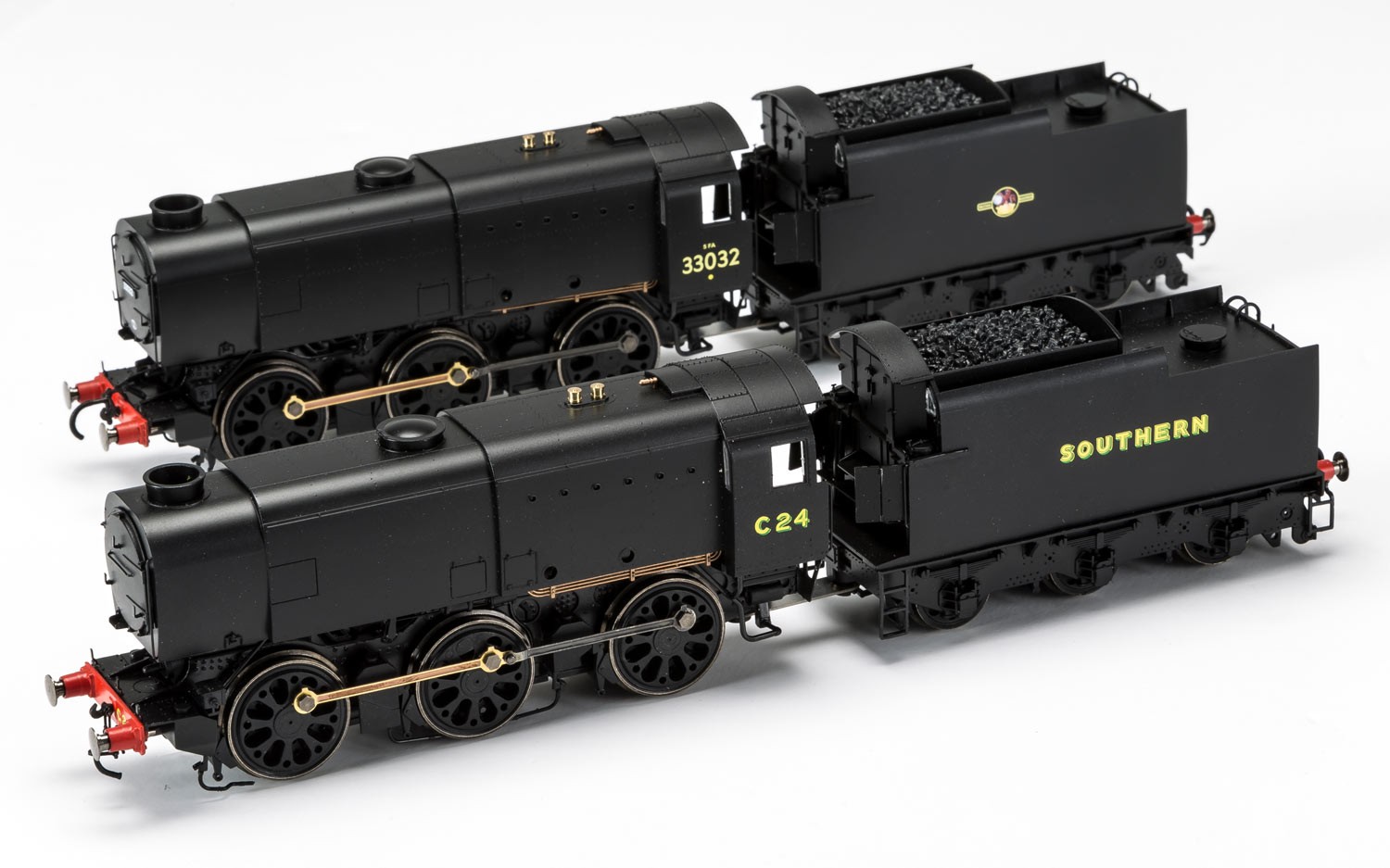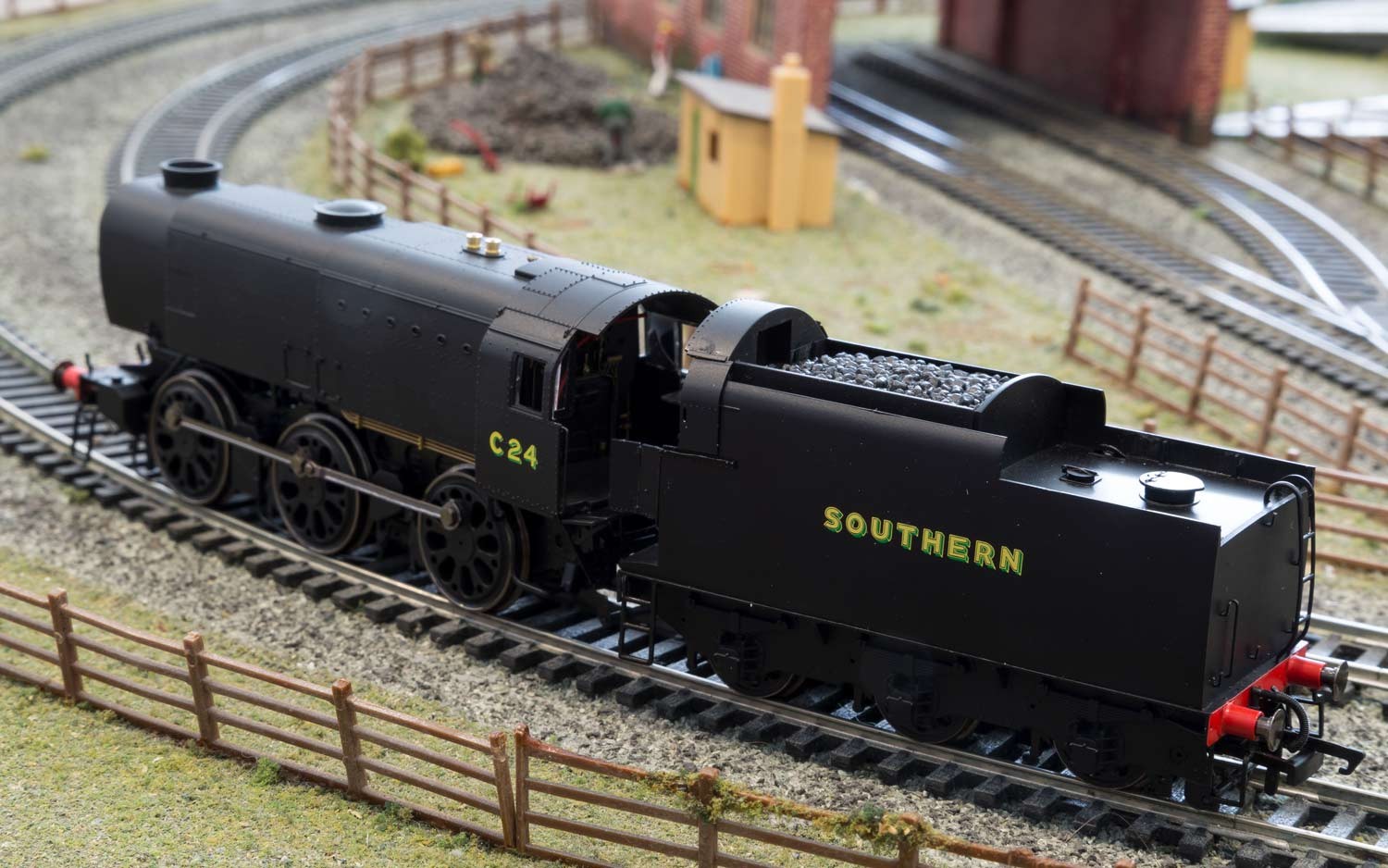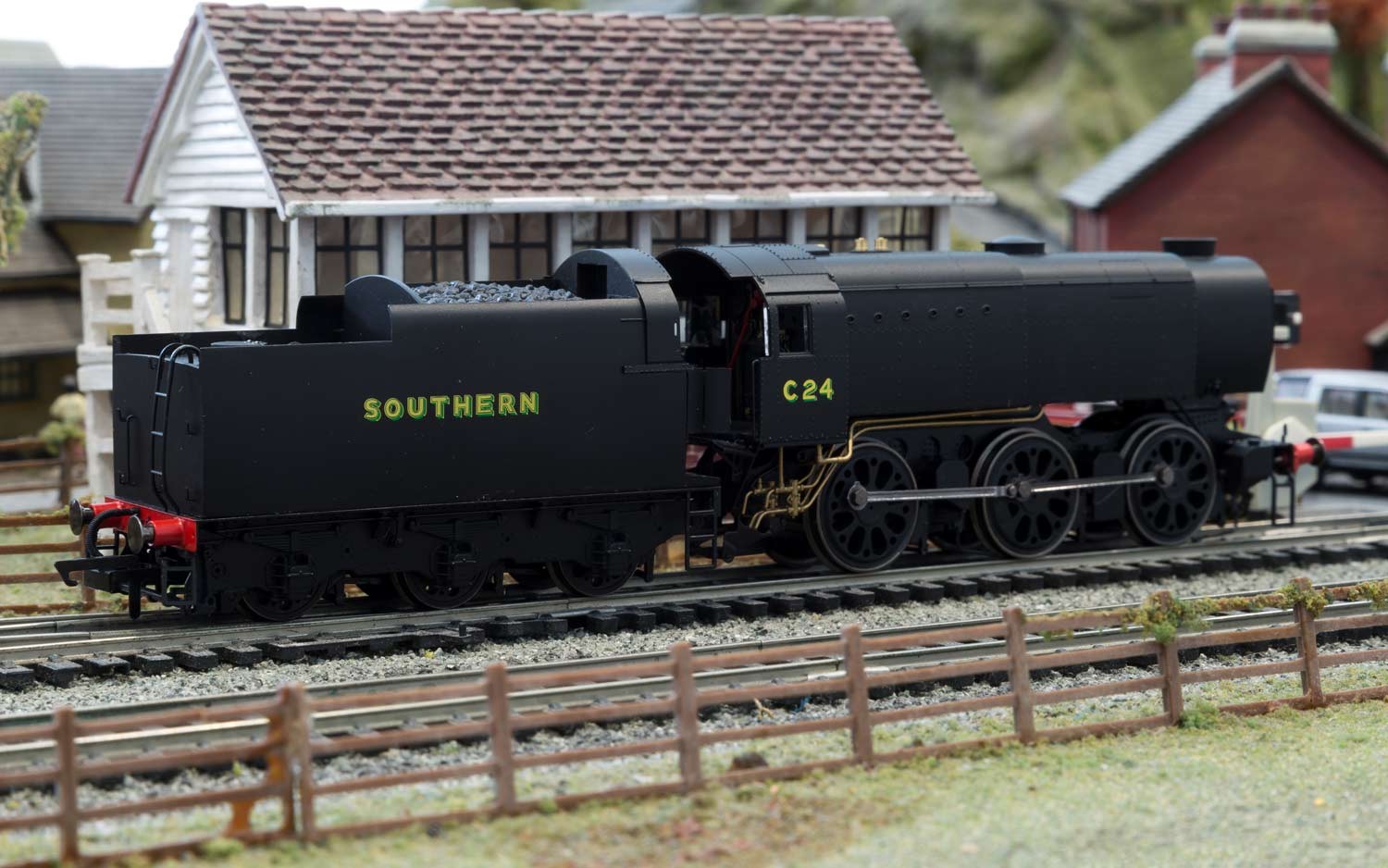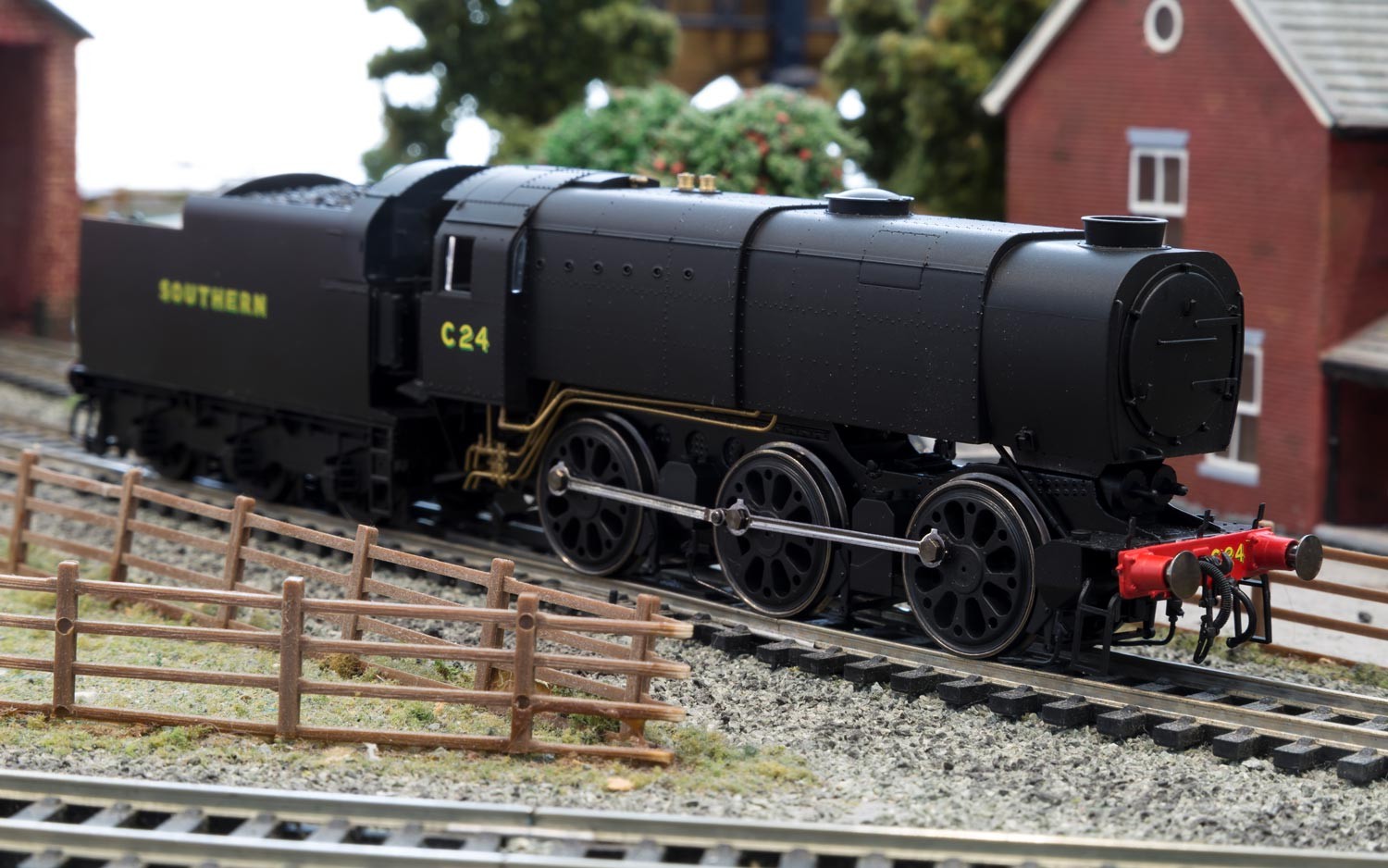SR, Q1 Class, 0-6-0, C24 – Era 3 (R3559)
Original price was: £124.99.£99.99Current price is: £99.99.
Although the Southern Region’s requirement for an austerity 0-6-0 tender goods locomotive resulted from the Board and Operating Department reacting to the increase in freight and military traffic at the time of the Dunkirk evacuation in 1940 with one eye on electrification cost savings on steam stock had been implemented since 1935. When Oliver Bulleid took over as Chief Mechanical Officer from Richard Maunsell in 1937 he inherited an ongoing order for twenty Q Class 0-6-0 locomotives which proved less than satisfactory in service and were in no way suitable for the demands of wartime. The answer for Bulleid and his team was to start from scratch.
The result that emerged over the next eighteen months was the basic brutally styled Q1 class the ‘Charlie’ as they came to be known a locomotive devoid of ancillary ‘furniture’ and reduced to the very bare bones of locomotive design. It had the largest available boiler fitted was more powerful than the ‘Q’ class and had a greater tractive effort yet it was barely 1½ tons heavier. The distinctive cladding for the boiler was ‘Idaglass’ an early form of fibreglass constructed over a square steel framework that gave rise to the square tin can look. Designed with free running in mind essential given its mixed traffic capability the locomotive performed almost as well running tender first as it did running forward being capable of a maximum speed of 75mph in both directions.
Bulleid’s concern for his train operating crews meant that the cab area bucked the austerity trend with the major controls for both the driver and fireman being kept separate as far as possible. The seats unlike those of the Drummond T9 were upholstered with a backrest and the rounded oversized cab was matched by a full cab on the 3 700 gallon tender that prevented the worst excesses of the British weather affecting the crews when running tender first.
There were faults with the design; the lack of a running plate the ill placed brass drainage key at the Fireman’s window the under-sized tender side-entry filler and the draughty footplate flooring but the most perturbing was the braking distance which was almost double that of an S15 with the same train load.
Forty Q1 locomotives were built during 1942 in three lots at Brighton and Ashford but a further twenty locomotives planned in 1946 were never built. Haulage tests were passed with honours setting new scheduling standards and the class was pressed into heavy war-time traffic across the Southern region as well as at Feltham for the important cross-London freight traffic. Post-war the class settled down to freight engineers’ and empty stock workings as well as some regular passenger turns. The first of the class No.33028 was withdrawn in February 1963 with the final three being withdrawn in 1966. One member of the class C1 was saved for preservation in the National Collection.
Locomotive C24 was built at Ashford and outshopped on June 26 1942 entering traffic at Feltham. Renumbered to 33024 under British Railways C24 was withdrawn from service from Three Bridges on August 25 1963.
Maximum curve Hornby 2nd radius + / 438mm+
jQuery(‘#bluefoot-accordion-16005’).bluefootAccordion(); “””
Out of stock
Description
Technical Specification & Detail
| Gauge | 00 |
| Length | 222mm |
| DCC Type | DCC Ready |
| Operator/Livery | SR Plain Black |
| Designer | Oliver Bulleid |
| Age Suitability | 14+ |
| Motor | 5 Pole Skew Wound. Loco Drive |
Special FeaturesNEM Couplings”






